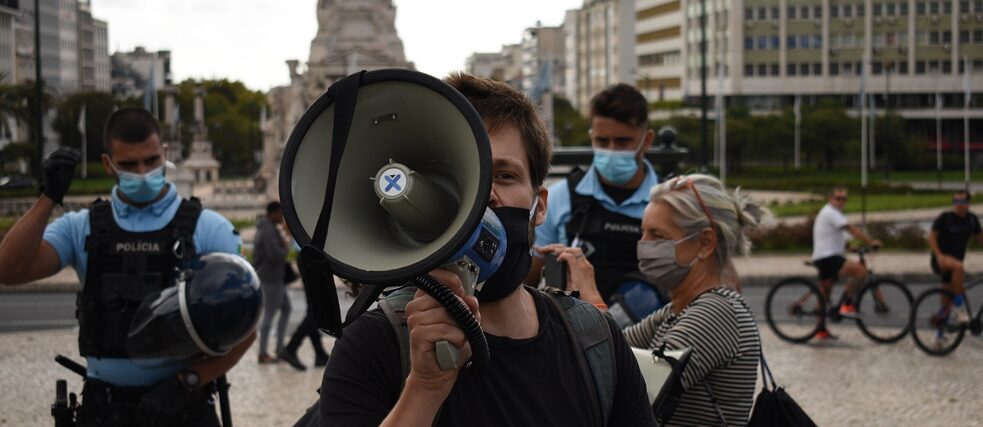The Glasgow Agreement
How the climate movement is developing its own agenda for climate justice

Emissions continue to rise even after 25 years of COPs, protests and demonstrations. What is stopping us from reaching our goals? The Glasgow Agreement outlines a plan that can take the climate movement a step forward.
By Matilde Alvim
As activists, we often wonder whether our protests are successful: Are we getting our message across clearly? Are we a thorn in the side of the companies and governments we criticise? Are we broadening our circle of allies by getting people to join us? Are we succeeding in igniting a public debate?
In the previous article, Carmen and Belén told us how Spanish activists see the COP and what effects it would have. But what if the movement no longer has time to wait for another round of negotiations? Because one thing is clear: All the protests, marches and demonstrations notwithstanding, emissions continue to rise.
Civil disobedience against business as usual
The movement has accordingly been organising protests with civil disobedience over the last two years, i.e. with a conscious collective decision to subvert or ignore the law for a clear political goal. Why take part in or organise such actions? I talked about this with Alice, an activist at Climáximo, who told me, "When our house is on fire, we have to stop everything we are doing and put an end to business as usual. We have a duty to disobey unjust laws." Law does not always rhyme with morality and at what they are doing to the planet at this time is perfectly legal.In point of fact, the climate movement has little time to change everything fundamentally. So we need a plan that puts the responsibility for reducing greenhouse gas emissions collectively on the movement itself, as governments and institutions continue to fail. This is precisely what lies behind the Glasgow Agreement. The aim is to "use civil disobedience as the main (but not only) tool to reduce emissions so as to prevent a 1.5ºC temperature rise by 2100." Dozens of organisations worked on the text for 8 months, which was signed in October 2020. More than 80 organisations from all over the world thus took it upon themselves to reduce 50% of greenhouse gases emissions by 2030. The idea emerged after (another) failed COP, i.e. COP25 in Madrid in December 2019: frustration with the impotence of institutions gave rise to a need to develop a concrete step-by-step plan for the climate movement.
The Glasgow Agreement in Portugal
Starting with an inventory of national emissions, the Agreement develops a climate justice agenda that gives the movement a clear course. Mariana, an activist with Fridays for Future Portugal who has been involved in the Glasgow Agreement from the outset, says: "Everyone knows our house is going up in flames, but no one has a plan to fight the fire."In Portugal, Climáximo and the student climate strike (FFF PT) are committed to such a plan. In March, we presented for the first time our inventory of Portuguese emissions - an X-ray of the production system that enabled us to identify the highest-emitting infrastructures and companies. We are now drafting our climate justice agenda on this basis, and are defining priorities for emission reductions together with local communities and anti-racist, housing and feminist movements. Our climate justice agenda is then networked with those of other countries to give rise to regional and international action plans.
The Glasgow Agreement shows that belief in the system and institutions is what is holding us back from achieving our goals. The key to the required change is in the hands of our movement and in taking confrontational action and creating a socially just plan by people for people.
We are the ones we have been waiting for to put out the fire.
In the next article we will look at individual actions: Do they become effective through their cultural significance?